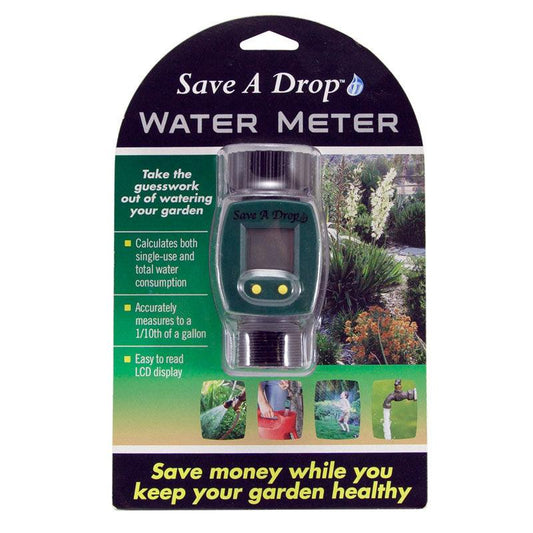Plants need water to survive—this is a fact. But watering your garden can sometimes feel like an art more than a science. There are plenty of tricks and tips that gardeners use to ensure their plants get the right amount of water. Are these tricks reliable, or are they just myths? Let’s uncover the truth behind some common garden irrigation myths!
Myth 1 - Don’t Water Mid-Day Because Your Plants Will Scorch
The idea that water droplets act like magnifying glasses and burn plant leaves is a common myth. If this were true, every afternoon rainstorm would lead to widespread crop failure! While watering mid-day won’t scorch leaves, it is better to water in the morning. Morning watering reduces evaporation, ensuring your plants get the most benefit from the water. Using drip irrigation is an excellent way to keep leaves dry and avoid mildew or disease.
Myth 2 - Drought-Tolerant and Native Plants Don’t Need Irrigation
While drought-tolerant and native plants can survive on natural rainfall once established, they still require regular watering during their first one or two years as their root systems develop. During particularly dry or hot seasons, even mature drought-tolerant plants may need occasional watering to stay healthy. Creating a balanced irrigation schedule ensures these plants thrive in your garden.
Myth 3 - Your Garden Needs One Inch of Water Per Week
The “one inch of water per week” rule is not a one-size-fits-all solution. Your garden’s water needs vary based on factors like weather, plant type, and soil composition. For example, sandy soil requires more frequent watering, while loamy soil retains water better. To accurately gauge your garden’s moisture levels, use a soil moisture meter or test the soil with your finger to a depth of one to two inches. Deep, infrequent watering is better than shallow daily watering, as it promotes a stronger root system.
Soil Moisture Meters
Myth 4 - Adding Gravel at the Bottom of Containers Improves Drainage
While gravel drains quickly, adding it to the bottom of your pots can actually hinder drainage. Water tends to pool above the gravel, creating soggy conditions that can lead to root rot. Instead of gravel, use quality potting soil with plenty of organic matter. For optimal drainage and airflow, try using Smart Pots, which are designed to promote healthy root growth.
Myth 5 - Wilted Plants Mean It’s Time to Water
While wilting can sometimes indicate the need for water, it isn’t always a reliable signal. Some plants, like squash and melons, naturally wilt during the heat of the day to conserve water. This process, called transpiration, reduces surface area and water loss. These plants often perk up in the cooler evening hours without additional watering. To minimize wilting and water loss, use drip irrigation, maintain healthy soil, and apply a layer of organic mulch.
Efficient Watering Tips
To ensure your garden remains healthy and hydrated, follow these tips:
- Water early in the morning to reduce evaporation and disease risk.
- Use drip irrigation for precise watering and to keep foliage dry.
- Check soil moisture regularly with a moisture meter or by hand.
- Apply a layer of mulch to retain soil moisture and reduce evaporation.
- Adjust watering schedules based on weather, soil type, and plant needs.
Water Wisely for a Thriving Garden
By debunking these common garden irrigation myths, you can adopt more efficient watering practices that save water and promote healthier plants. From using tools like soil moisture meters to choosing the right containers, every small step adds up to big improvements in your garden’s overall health. Water wisely, and grow organic for life!
🌿 Resource Area: Efficient Irrigation Setup
Get step-by-step guidance for setting up drip irrigation with timers, filters, and tubing to conserve water and maximize efficiency:
- Easy Drip Irrigation for Raised Beds – Walks through adding an electronic timer, vacuum breaker, filter, and tubing for smart garden watering.
- Galcon 9001BT Programmable Water Timer (Video) – See how to install and schedule watering cycles easily.




